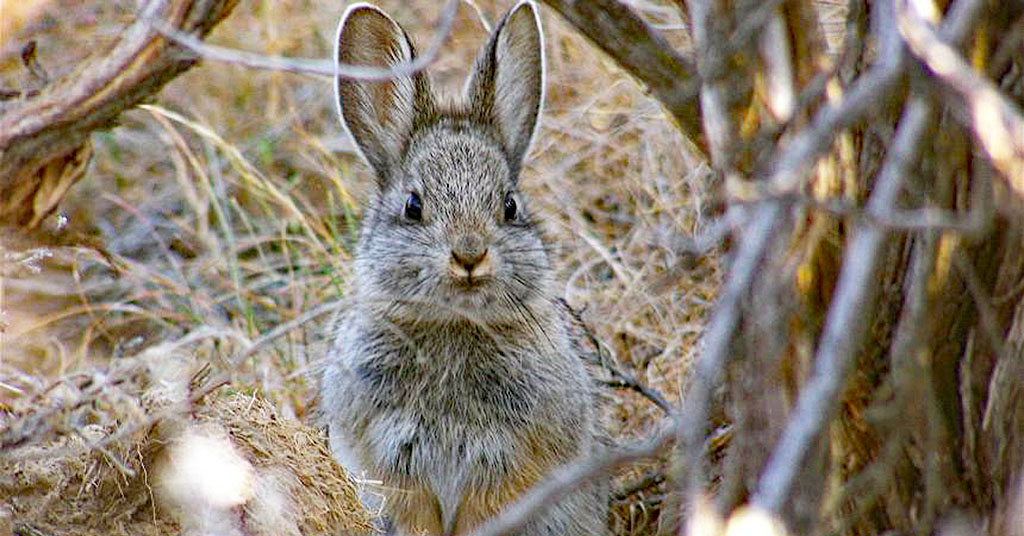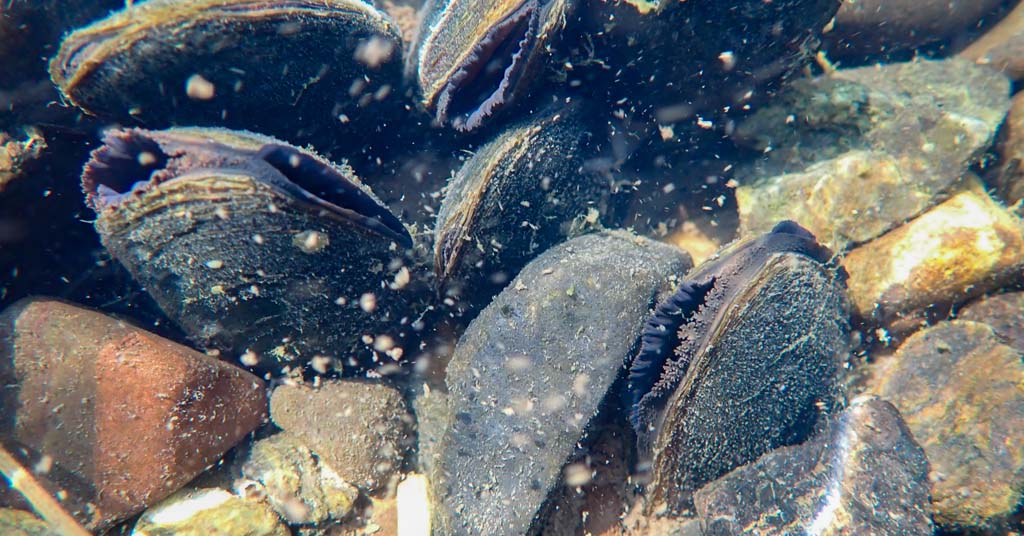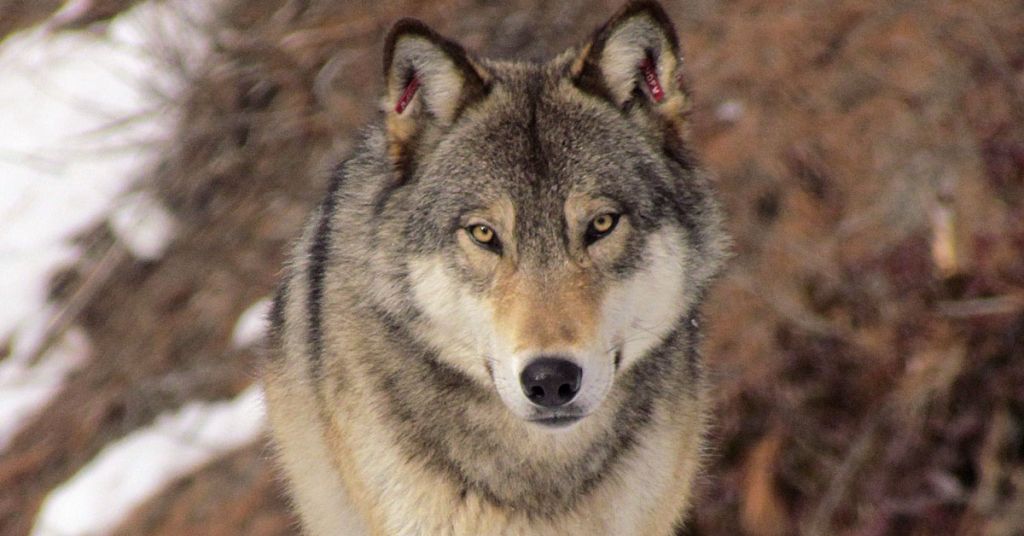As the state of Washington updates its list of rare lichens, experts suspect a variety of factors are to blame for missing species
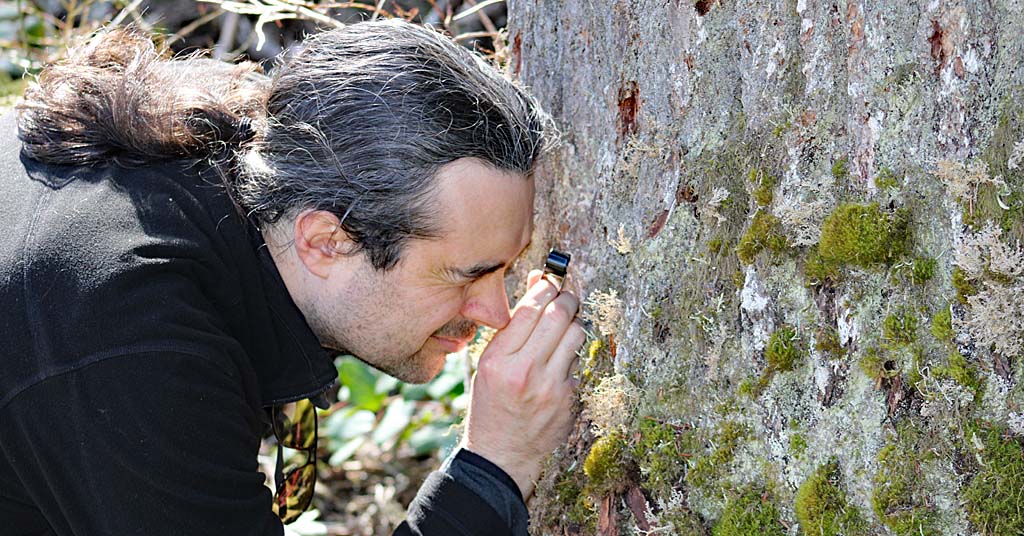
Overlooked: Lichenologist Jesse Miller is looking to raise awareness of the importance of an under-appreciated part of the Columbia Basin ecosystem. Photo: Nathan Gilles
By Nathan Gilles. August 1, 2024. Those strange, sometimes otherworldly organisms called lichens can be found throughout the Pacific Northwest.
Though few people know what a lichen is—let alone can name a lichen species—lichens can easily be found colonizing our city sidewalks as well as clinging to our forest’s trees.
Although frequently referred to as single species, in reality lichens, like coral, are symbiotic communities of organisms.
These communities include at least one fungus and at least one photosynthesizing partner, namely algae or cyanobacteria. The photosynthesizers provide food for the fungi. The fungi reciprocate by providing a structure—or home—for their green partners to live in.
Working together, symbiotic lichen communities create otherworldly—sometimes even beautiful—structures. For these reasons, lichens are sometimes referred to as “coral on land.”
They also serve a number of key ecological functions— contributing to the water cycle and providing food and nesting material for animals. Sensitive to pollution, scientists even use lichens to monitor air quality.
While many lichens are common, some are rare. Still others are extremely rare, growing in only the most out-of-the-way, pristine and un-trampled environments.
Just how rare these rarest of lichens have become is highlighted in an upcoming report from the state of Washington’s Department of Natural Resources.
The report, however, is just as notable for what it leaves out: a concern that some lichen populations have gone missing and that climate change might be to blame.
New report
The report, “2024 Washington Lichen Species of Conservation Concern and Review Lists,” updates the conservation status of 81 species of lichens found in the state. It was written by members of DNRs Washington Natural Heritage Program.
According to the report, Washington now contains 54 species of lichens listed as either threatened or endangered.
In addition, three species of lichens are now believed to be extirpated, or locally extinct in the state.
The other 24 lichens are listed as “sensitive,” one step below threatened.
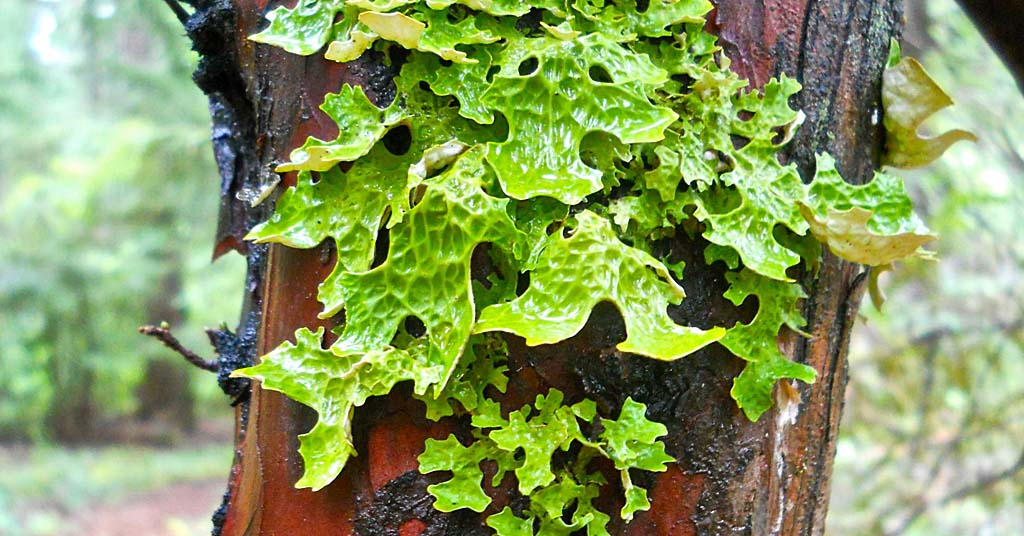
Multihued: Lobaria pulmonaria lichen. Photo: Jesse Miller
Washington’s previous lichen list, created in 2011, included 53 lichen species, 41 of which were listed as threatened or endangered.
The 2011 list estimated one lichen species was likely extirpated in the state.
Only two lichen species are listed under the federal Engendered Species Act. Both species are found in the eastern United States.
Washington’s 2024 lichen report and list are in draft form and have not been adopted by DNR as official policy.
Columbia Insight obtained a copy of the report and list through a public records request.
While the increased number of threatened and endangered lichens is concerning, what the 2024 list and report don’t mention is recent research suggesting that some lichen populations might no longer exist.
Missing lichens
The most noteworthy lichenologist floating this idea is Jesse Miller.
Miller is the president of the California Lichen Society. He’s also the lead botanist for Washington’s Natural Heritage Program and the 2024 report’s lead author.
Last year, Miller went on the hunt for a rare lichen called Nephroma occultum (aka “cryptic paw lichen”). He visited five sites in southwest Washington’s Gifford Pinchot National Forest where the rare species had previously been found.
“And I didn’t actually find it once anywhere,” Miller told Columbia Insight.
Miller says this surprised him because the forest habitat seemed ideal for the species.
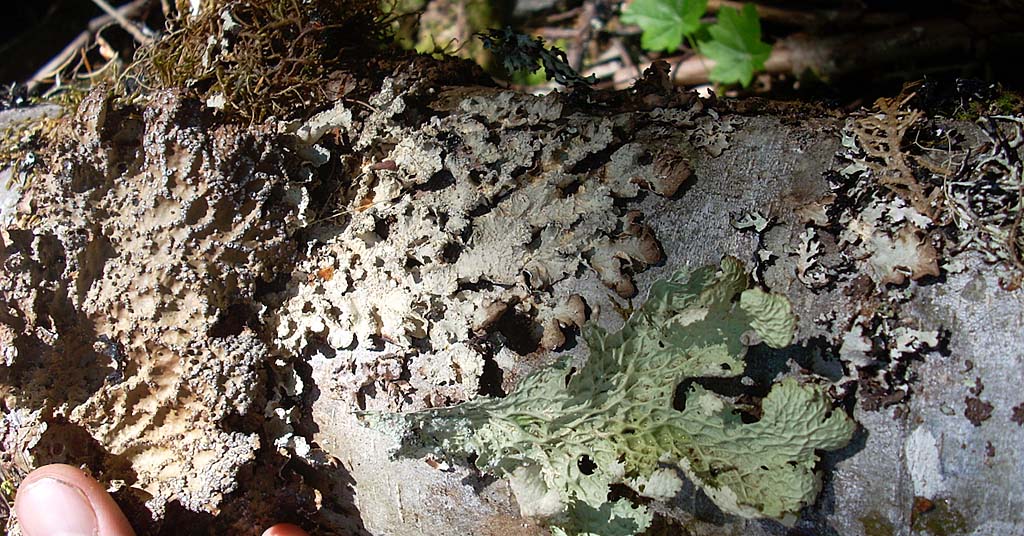
Lichen trio: Nephroma occultum flanked by psuedocypehllaria anomala (left) and lobaria oregana (right) lichens in Oregon’s Willamette National Forest. Photo: Jesse Miller
N. occultum is an old-growth obligate lichen, a lichen found only in old-growth forests.
Because old-growth forests are now rare in the Pacific Northwest, many old-growth obligate lichens are also considered rare species. Many are listed on Washington’s lichen list.
N. occultum lives high in the forest canopy, which makes observing it difficult. Specimens are typically collected and identified on the forest floor, where they often fall.
All this means that the rare lichen might still be in the treetops at the locations Miller visited. But it might also mean that N. occultum is now extirpated at those locations, according to Miller.
“N. occultum is hard to find, and you probably need at least two visits to say anything confidently about whether it’s there,” says Miller. “But after two visits, I’d feel more confident saying that they’re likely extirpated.”
Miller’s survey work led to an updated conservation status for N. occultum.
The lichen was previously listed as “sensitive” and is now listed as “threatened” in the state of Washington.
Second missing species
N. occultum isn’t the only old-growth obligate lichen that’s gone missing in recent years.
Stephen Sharrett, an associate researcher at Eastern Washington University, has gone looking for another rare old-growth obligate lichen called Pseudocyphellaria rainierensis. He’s had difficulty finding it.
In 2021, Sharrett, then an undergraduate student at The Evergreen State College, visited 34 sites in Washington where P. rainierensis had previously been found, including sites in the Gifford Pinchot National Forest and Olympic National Park.
P. rainierensis is also known as old-speckle belly lichen. Sharrett prefers to call it “old blue.”
“We only recovered old blue at 18 of the 34 sites, or about 53%, which suggested to us that there are declines in the population of the species,” says Sharrett.
P. rainierensis was listed in 2011 as sensitive. It continues to be listed as sensitive on the updated 2024 list.
Miller says Sharrett’s survey work helped inform the current status of P. rainierensis, adding that although the species has “declined a lot,” it’s still not rare enough to be considered threatened.
Accidental experiment
Sharrett suspects logging has fragmented the forest habitat of P. rainierensis, helping lead to the species’ decline.
He also thinks climate change could be partly responsible for the disappearance of old blue. Though he says the verdict is still out.
Miller says forest fragmentation is also likely an issue in the disappearance of N. occultum. He also suspects climate change and the prolonged drought it has brought to the Pacific Northwest could be at work in the disappearance of it and other old-growth lichens.
“These are lichens that live in relatively cool, wet forest climates, and some of these extreme heat events we’ve been having recently could potentially affect them,” says Miller.
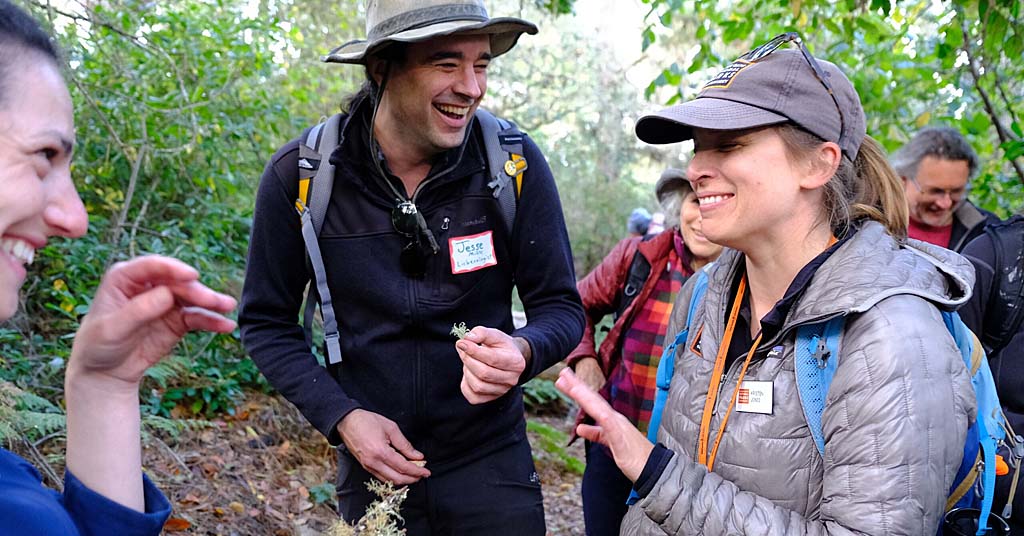
Group effort: Jesse Miller leads a lichen walk in California. Photo: Meilce Hackett
While the upper thermal limits of many lichen species are unknown, Miller says he inadvertently determined how hot was too hot for some lichens when, as a lecturer at Stanford, he accidentally set the temperature of his lab’s growth chamber full of lichens to 116 degrees Fahrenheit. The lichens all died.
During one day of the 2021 heat dome, Portland reached 116 F. Enough to kill some lichens, according to Miller’s accidental experiment.
“It’s not like lichens are always going to die when they get to that temperature [116 F], but it seems like that’s a possibility,” says Miller.
“Definitely climate change is affecting lichens,” says lichenologist Daphne Stone, faculty research associate at Oregon State University and current president of the Northwest Lichenologists, a regional, volunteer-run nonprofit focusing on lichen research and conservation.
The 2024 lichen list was largely built on data compiled by Stone and other scientists associated with the Northwest Lichenologists. The group also provided the bulk of the research that went into the state’s previous 2011 list.
Lichens, says Stone, aren’t the only organisms sensitive to extreme temperatures and drought; the trees they live on are as well.
“And then of course, when trees die, all those lichens on those trees die,” says Stone, referring to recent tree die-offs in the Pacific Northwest believed to be tied to climate change.
Outdated already?
Lichens remain largely understudied. Consequently, there’s not that much up-to-date fieldwork going on.
This means the lichenologists who created the current list had to rely on old survey data as well as on lichen specimens stored at regional herbariums to determine the status of many species.
Not only were some of these specimens collected decades ago, many were mislabeled.
Many specimens were also collected before GPS existed and listings included only vague descriptions of the locations where they’d been collected and presumably could still be found.
In other words, like many conservation lists, Washington’s 2024 lichen list is already effectively out of date.
Part of the problem, says Miller, is there’s not a lot of funding out there for in-depth lichen surveys, in part because lichens go largely unnoticed by the general public as well as by many scientists and conservationists.
This leads to a Catch-22.
“You don’t know how rare something is until you look, and you can’t really look until you have funding to look,” says Miller.
A lichen win?
If formally adopted by Washington State, the 2024 lichen list would be a major accomplishment for the Northwest Lichenologists, which has been pushing the state to recognize and protect rare lichens since the early 2000s.
And, if adopted, the sensitive, threatened and endangered lichens on the list would be afforded the same protections that rare plants listed as species of conservation concern currently receive in the state.
While these state protections are limited and don’t come close to the protections provided under the Endangered Species Act, they would nonetheless require DNR to consult its own list when pursuing timber sales on DNR lands.

Many forms: Alectoria lichen. Photo: Jesse Miller
Similar limited protections could also apply to lichen-containing wetlands overseen by the Washington State Department of Ecology.
The new list’s 78 sensitive, threatened and endangered lichens would also greatly expand the number of lichen species considered for protection.
Adopting the list would also put Washington far ahead of Oregon in its efforts to protect lichens.
Oregon provides zero protections for lichens at the state level.
Oregon’s Native Plant Conservation program, the Oregon equivalent of Washington’s Natural Heritage Program, protects only vascular plants, though some mosses, which are nonvascular plants, are protected.
Experts won’t make final decision
To be formerly adopted, the new lichen list first needs to be reviewed by scientific experts.
In this case, the experts would most likely include scientists at the Northwest Lichenologists who worked on the report.
Qualified lichenologists, however, won’t make the final decision, and neither will Miller.
If the current adoption process follows previous efforts, the decision will be made further up the food chain at DNR, perhaps going as far as the commissioner before it becomes official policy.
“I think by adopting this list, which isn’t official yet, but hopefully will be soon, I think it really makes Washington a leader in biodiversity conservation, because we’re paying attention to a group of organisms that are often overlooked,” says Miller.




